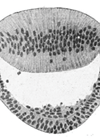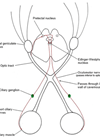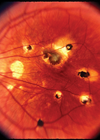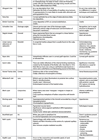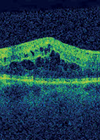Trainees archive for 2015
The embryology of the eye
Nobody claims to like embryology. At least nobody I know. It has been a neglected part of the curriculum since time immemorial and a vicious cycle occurs in which those with an incomplete understanding fail to appreciate the inherent beauty...
The assessment of pupils and pupillary reactions
Understanding pupillary reactions is vital in understanding basic neuro-opthalmology. It is a skill required in eye casualty, clinics and perhaps most importantly, exams. To start at the beginning, the pupil is the central aperture of the iris, its size controlling...
White dot syndromes
It is fair to say that trainees and consultants who are not medical retina specialists are a bit scared of the so called retinal ‘white dot syndromes’. It is easy to understand why this is the case, as almost every...
Virtual reality for the ophthalmic trainee
If you believe the tech blogs 2015 is the year of virtual reality. Industry experts believe this will be due to the potential commercial release of the poster boy of this new revolution, the Oculus Rift. This is a headset...
Lines, dots, spots and rings in ophthalmology: understanding eponyms
Eponymous names are familiar to all who have undergone undergraduate and postgraduate training in medicine. The ability to name a few allows one to stand out among your peers and rare, or not so rare, eponymous syndromes are a favourite...
The management of retinal vein occlusions: a summary
Retinal vein occlusions (RVO) are the most common cause of visual loss from retinal vascular disease second to diabetic retinopathy. Vision is lost due to ischaemia, macular oedema and / or haemorrhage which ultimately effects a patient’s quality of life...


